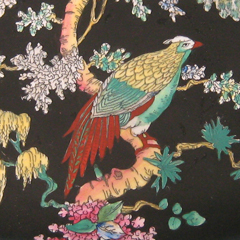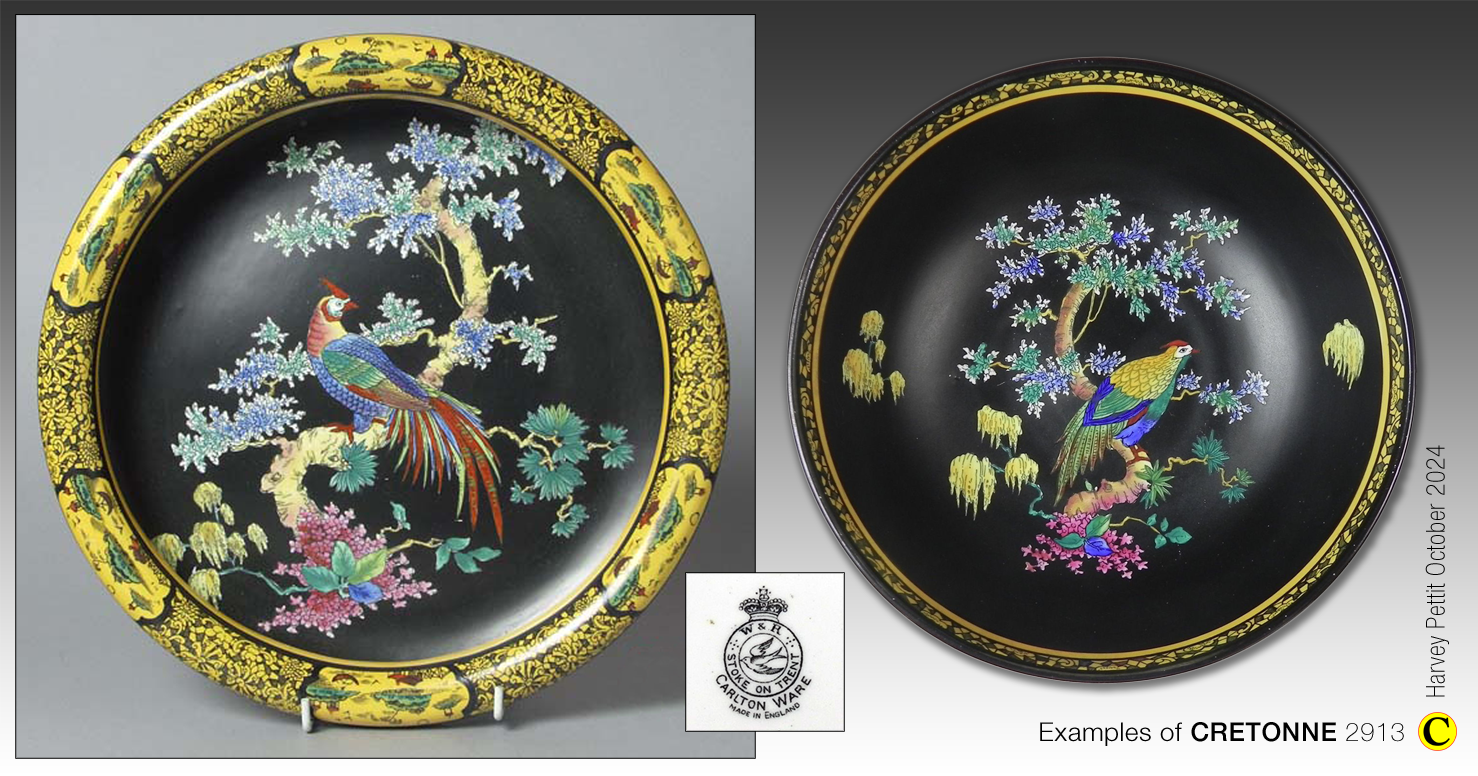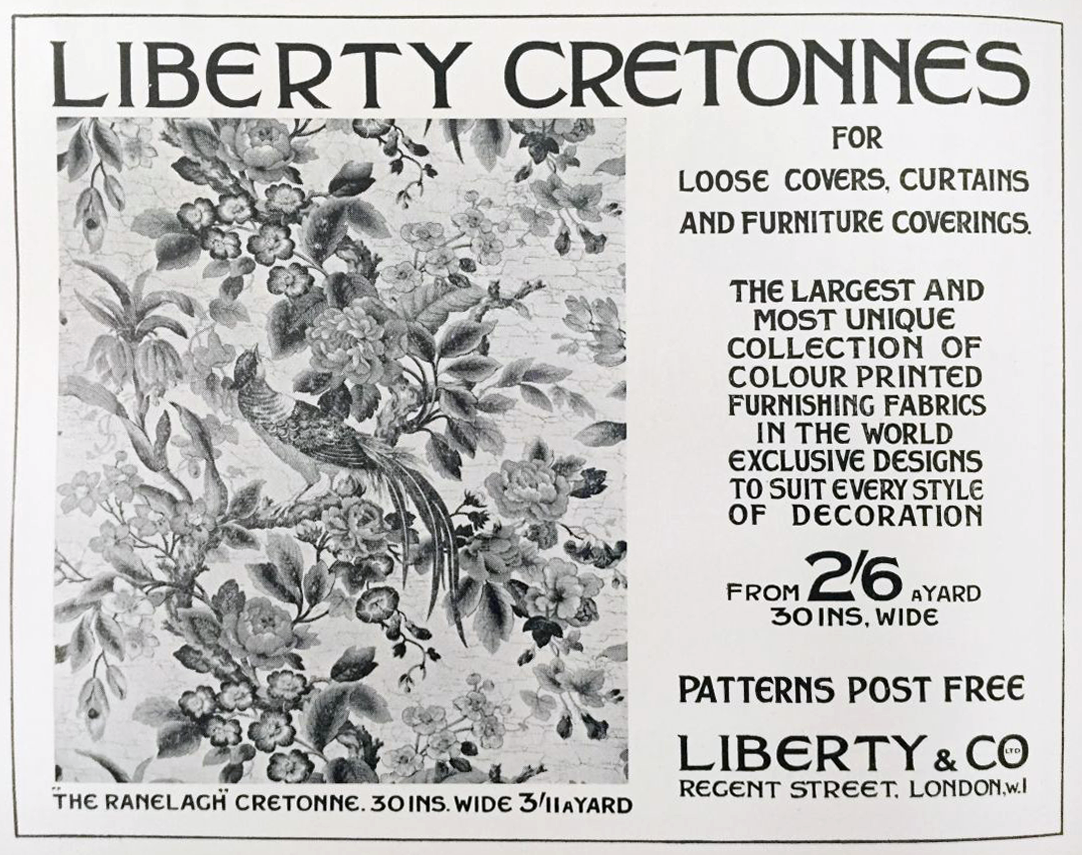Boulton's Birds - Part Four

The CRETONNE pattern
and its Border
Devised by Enoch Boulton
by Harvey Pettitwith border artwork by Barbara Anne Lee
This is the fourth in a series of sixteen articles on bird patterns introduced by Enoch Boulton during his tenure as designer and decorating manager at the Carlton Works from 1921/22 to 1930.
Below are images of two bowls decorated with Carlton Ware's CRETONNE pattern. As you can see, the pattern comprises two parts: one featuring a larger, more flamboyant bird, and the other with a smaller fowl perched on a smaller branch. The transferer, whose job it was to place prints of patterns onto ware, would choose which better suited the shape.

Devised by Enoch Boulton and introduced around 1925.
To see these bowls fit your device's screen and/or enlarge, click or tap on them.
To return to this page, use your back button.
There was only one version of CRETONNE. It was printed in black against a semi-matt black ground from which the print area was masked, ensuring that the on-glaze colours remained bright due to the white of the body beneath.

Cretonne is a type of printed cotton fabric typically used for upholstery and drapery, often printed with flowers and birds. On the right is a contemporary advertisement from 1928, showing a cretonne with a bird similar to the one in Boulton's design.
Fancifully, perhaps, Boulton's CRETONNE was partially copied from some new furnishings that Mrs. Wiltshaw had bought for The Firs in Newcastle-under-Lyme (now a museum), into which Cuthbert Wiltshaw's growing family had recently moved.
To see the advertisement fit your device's screen and/or to enlarge, click or tap on it.
To return to this page, use your back button.
Double Identity
In the illustration below, comparing CRETONNE with the slightly earlier PHEASANT ROSE pattern, you can see that, aside from the colouring,
the bird and part of the branch on which the fowls perch are identical.

To see this detail fit your device's screen and/or enlarge, click or tap on it.
To return to this page use your back button.
Why and How?
Before a pattern is engraved onto a copper plate from which it is printed, designers would draw the design on Bristol board (as explained to us by Violet Elmer). The drawing was then given to the engraver, who could replicate it exactly. Perhaps, in this case, the drawing, on its return, was partially erased and new elements added and sent back to the engraver. Or had the expensive-to-produce copper plate been modified, if this was feasible? We can only guess, and possibly wrongly. I could also suggest that something very clever is going on in that the bird with part of the branch on which it is perched is printed alone from a separate copper plate, and the other elements added as required from their copper plates, thereby reducing the engraving costs.
BORDERS
A border was not designed specifically for CRETONNE. Instead, it used the border and bead from the TEMPLE pattern by Horace Wain, Enoch Boulton's predecessor, introduced a few years earlier in 1921. Below, Barb has added the DEEP YELLOW ground that was used for the border and bead.
TEMPLE BORDER

V1b October 2024.
If more accurate information comes to light I will update this page.
Barb would like to thank the members of our companion Facebook Group who supplied good quality images to help her replicate the borders above.
